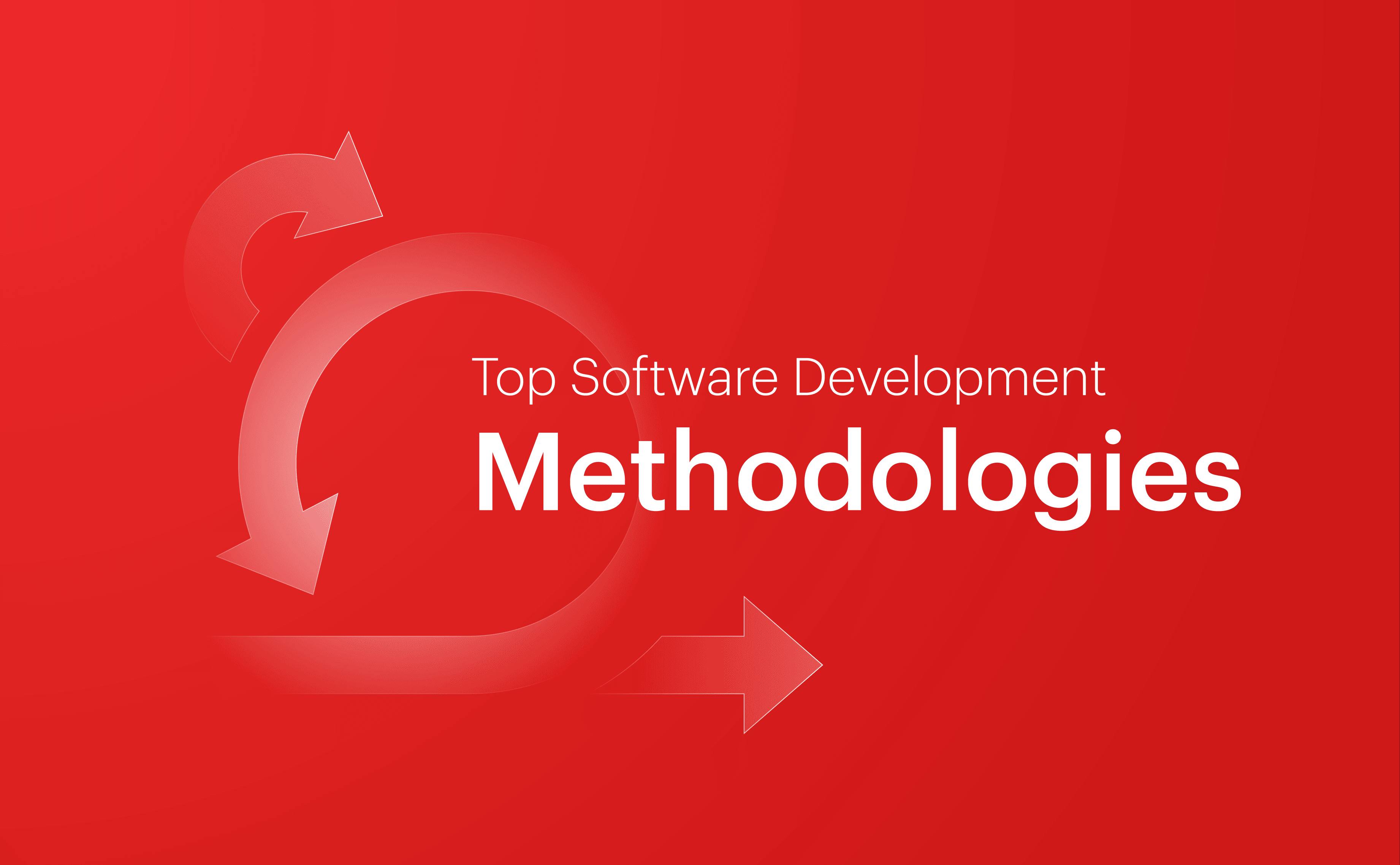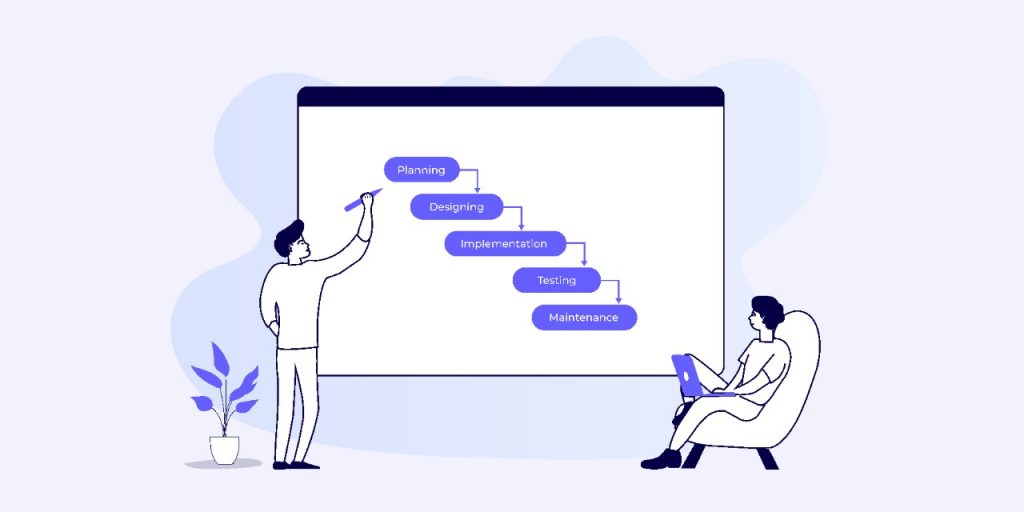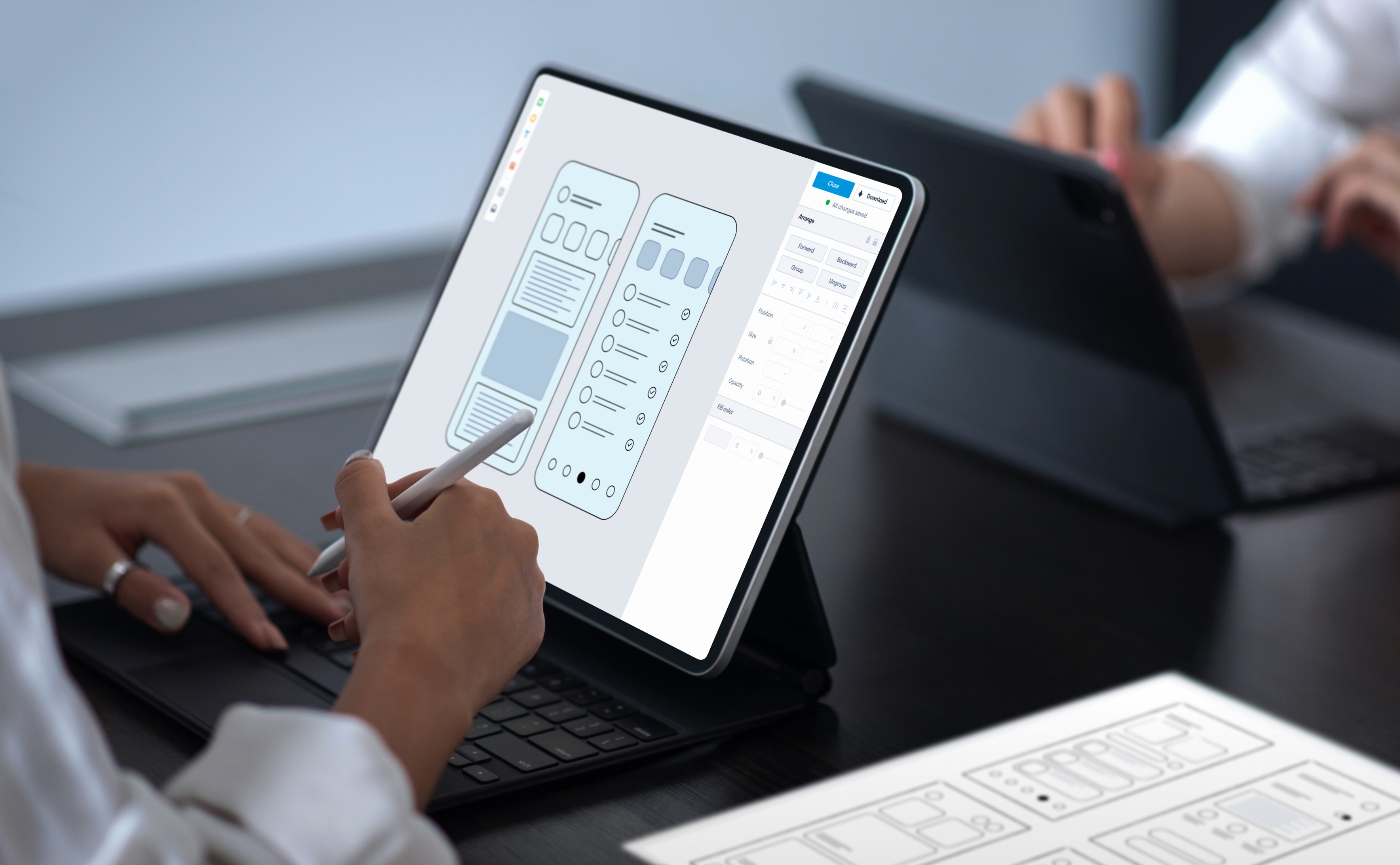13 Best Software Development Methodologies With Advantages and Disadvantages (2026 Update)

What is Software Development Methodology?
It is the methodology or structured processes that make up the development of a given software solution or project. It combines design philosophy and practical, realistic ideas that aim to create an organized method of software development.
There are different methodologies based on various approaches, that were introduced over the years.
Software development methodologies or software development life cycle provide a structure for developers and designers to collaborate and facilitate effective teamwork. They also help to create a formal communication platform and define how info is exchanged among team members.
While most software development companies agree on the importance of adopting a methodology, there is still debate about which one is ideal, since each software development team faces unique benefits and drawbacks with different methods.
The most suitable methodology also depends on the goals and needs of the team and the project, and the team structure. A company may also employ different methods for various projects.
Need of Software Development Methodologies
One can say that it’s imperative to not just select an appropriate software development methodology, but to also apply it properly and in a discipline across the software development life-cycle of the project. If done haphazardly, it could prove disastrous.
Without a proper structure, there is a higher chance of miscommunications, and having to incorporate frequent changes in design and functionality because of customer requests.
Modifying the software numerous times can impact the project negatively – especially in terms of cost and time. It could lead to waste and duplication of effort, and excessive expenditure and time spent, which finally results in an application that’s not high quality.
Software development methodologies aim to benefit customers too – and not just the developers. Choosing the optimal methodology helps ensure that both sides are on the same page and that all the factors are properly evaluated before taking any major decision.
Methodologies help make the entire process more efficient, and provides a precise timeline for delivery; it also empowers the team so that they don’t react to all the inputs they receive, but rather, make them more systematic and controlled
Let’s now delve into the different types of software development methodologies or SDLC methods and examine the benefits and drawbacks of each.
1. Waterfall Model Methodology

This is one traditional software development model which has its origins a couple of decades ago – however, it is still quite popular, and useful even today.
It takes a simple and linear approach, with different phases of development split into flowing and chronological processes. It is also easy to understand and follow and is ideal for teams with inexperienced developers.
One stage has to be fully completed before the next one can be started. Only after all the requirements are established, can the designing work begin. The name is chosen because it’s a uni-directional flow – it’s one way, no going back. It is not flexible.
Advantages of Waterfall Model
- It’s linear and easy to understand, and ideal for new developers
- All specifics and deliverables are defined before work starts
- With the clear definition, there’s little scope for miscommunication of information
Disadvantages of Waterfall Model
- Without taking customer feedback in the initial stages, there’s a possibility of the project going moving away from the target.
- After development is completed, only then testing is conducted; this could make fixing of certain issues problematic
- As a rigid model, it’s difficult to make changes, and probably unsuitable for complicated projects
- The team may end up spending too much time documenting rather than working on the solution for the end-user’s problems.
The waterfall model is suitable for projects with well-defined scope; where every requirement is spelled out clearly; when the outcomes are predictable; and when you don’t have enough experience in the team.
ALSO READ: Website Architecture Design
2. Prototype Methodology
This is one of the most prevalent software development life cycle methodologies in vogue today.
This approach allows developers to create prototypes of the actual product, and it is put to test by actual customers, whose feedback is taken. Based on this feedback, the prototype is tweaked and refined several times, till the customer is satisfied.
The main reason for its popularity is the exhaustive evaluation it undergoes before actual development begins, as this can uncover potential issues, and gives time to the development team to fix them.
It is important to note that the success of this model depends to a great extent on how well the team communicates with the customers in the process of testing the product. The cost of the prototype development is often borne by the development team.
Advantages of Prototype Model
- All possible problems can be detected early on, minimizing chances of product failure
- Ensures customer satisfaction before actual development begins
- Helps build good relations with the customer from the early stage
- Enables gathering of detailed info and requirements with the prototype, which is used for the final product
Disadvantages of Prototype Model
- Excessive testing and feedback taking can increase the delivery timeline
- Customer expectations can undergo drastic changes and may not be in sync with the prototype at all
- It may push up the expenditure and go over the budget
This software development methodology is perfect when there are several variables and unknown factors at play in the project – like, a portal with heavy user interaction.
This approach can help you discover what users like best, and mitigate the risk of product failure. It is ideal when you’re building software with many unknowns.
For example, an online platform with intense user interaction. With the prototype model, you can find out what works best with users and reduce the risk of developing the actual product.
3. Lean Development Methodology
This model stands out among the different types of methodologies in software development, as it emerged from the principles of lean manufacturing by carmaker Toyota, and concentrates on boosting productivity while decreasing wastage.
Based on this, developers avoid activities that are not productive and ensure high quality in their work.
It also stresses the need to learn continuously, and to not take decisions in haste without knowing all facts – being open-minded and gathering every possible bit of information is critical in this method.
Here, developers need to pinpoint roadblocks that could potentially impede the process, with the aim of establishing an efficient, flawless system.
Lean development also stresses communication, team collaboration, and mutual respect.
Advantages of Lean Model
- Minimizes wastage, like needless documentation, repetitive activities, and superfluous codes.
- It brings down overall expenditure on the project
- Promotes efficiency and productivity and speeds up turnaround time
- Team members are vested with greater decision-making powers, motivating them to do more
Disadvantages of Lean Model
- You need an expert team of developers for this model to succeed
- The responsibilities could overwhelm less experienced developers and they may lose focus
- Exhaustive documentation is required which can burden the analysts and developers
Lean development as a system development methodology is ideal when you have a smaller project with a rigid or small budget – and an experienced team of developers.
You need to squeeze the most out of a smaller team to get great results with more efficiency and minimal wastage. This is not practical for large projects, as large teams are required to complete numerous tasks.
ALSO READ: Future Scope of eCommerce Business
4. Agile Development Methodology

This is probably the most popular of the software development models in use today. The approach is quite different from the traditional linear method.
Rather than stressing the documentation and inflexible procedures, this method focuses on satisfying the end-user.
Agile breaks tasks into short ‘sprints’ of about a week to 4 weeks; an iterative approach that ensures multiple testing throughout the development process. Customer feedback is taken at specific predetermined intervals, and changes are made accordingly.
This model prioritizes communication among all stakeholders, like developers, customers, users, etc.
Advantages of Agile Model
- Minimal flaws or errors thanks to iterative testing and continuous fine-tuning
- Better understanding and collaboration among team members, due to transparency and ease of communication
- Any changes required can be taken care of easily without impacting timelines and budgets
- Significant improvement in the quality of the product developed.
Disadvantages of Agile Model
- There could be too many requests for changes, and the developers may get overwhelmed
- With less stress on documentation, in the later stage of development this may create problems.
- Too many discussions and review sessions can take time away from core activities
- It’s not easy for inexperienced or fresh developers as the approach is not rigidly structured
Agile software development methodologies are suitable for projects that necessitate quick change; it’s also great when you want to develop software in a new niche. Agile works best when you want to incorporate fresh ideas to keep in step with market trends and requirements.
However, it mandates that you need experienced developers capable of working independently in an environment that is not structured and is very fast-paced.
5. Rapid Application Development (RAD)
Launched in 1991, this approach to software development actually was the basis for the modern iterative methodologies like Agile.
The RAD model is all about ensuring product development as quickly as possible, with zero compromises on quality. This framework has four phases:
- Supporting project requirements
- Making models
- Testing
- Deployment
It’s not a linear model, and hence stresses on developing prototypes first, and getting the customer to test them.
The model goes through several iterations till the client is satisfied. Thanks to the rigorous testing and feedback received, the development team can mitigate risks and create a product that is almost flawless.
Following this approach can result in a successful product rollout within the predetermined delivery timeline.
Development tools capable of automation and streamlining the process of development are often used by teams that follow the RAD model of software development.
Advantages of RAD Model
- Reduce risk of product failure through testing and customer review
- Greater customer satisfaction
- Ideal for apps that are small and medium sized
- Shorter turnaround time for project
Disadvantages of RAD Model
- Too much dependence on customer response
- Experienced and highly skilled team is a must for this method to succeed
- Only possible for projects with flexible or large budgets
- No documentation to track progress
The RAD software development methodology works best when you have a highly skilled and experienced team and customers who are involved in the development process and are quick to respond.
It’s important to maintain a good communication flow for this approach to succeed. You will need to invest in a few tools that will help hasten the pace of development.
6. Dynamic Systems Development Model
The RAD can be considered the precursor of the dynamic system model; it’s a slightly refined form of the former and focuses on the prompt delivery of the project.
This approach also aligns with the business requirements and the project goals.
There are four stages in this methodology of software development:
- Feasibility and business study
- Developing a prototype
- Designing and developing
- Deployment
Just as in the previous model, the end users’ feedback is taken throughout the development process, decreasing the risk of moving away from the goals and requirements of the project.
This model also includes detailed documentation which is absent in the iterative or Agile approaches.
Advantages of Dynamic Systems Model
- Thanks to the iterative approach, the developers can ensure the prompt delivery of basic functionalities
- The timeline and budget can be better managed by development team
- There is adequate documentation that is created during the project life-cycle
- Proper communication is established between the developers and users, helping the team stay on track.
Disadvantages of Dynamic Systems Model
- Costs may be higher
- Heavy involvement is needed from both users and developers
- Larger teams are more likely to succeed than small ones
- It’s a complex concept, as is the deployment of the model
The Dynamic Systems Model can be used by large organizations which are bogged down by red-tapism and redundancies. This approach helps break down rigid processes into manageable, iterative parts, streamlining communication among various teams.
ALSO READ: Top Features of React JS
7. Scrum Development Methodology
Among the different methodologies of software development, Scrum is perhaps the most flexible one.
Based on the Agile model, it has incremental as well as iterative approaches and involves the Development Team, Scrum Master, and Product Owner.
The product owner is similar to the project manager – takes feedback from the customer and makes sure that the team is adhering to their requirements.
Scrum Master is a facilitator who familiarizes the team with the process of Scrum development. And the team is in charge of developing the project.
What makes Scrum stand out is that tasks are executed in sprints, with each sprint lasting 4 weeks.
The rapid execution enables teams to detect problems, suggest remedies, test them, and take feedback quickly and speeds up project development.
Advantages of Scrum Model
- Problems can be resolved quickly thanks to short iterations
- With regular feedback included in the process, it is highly responsive to changes
- It is cost-effective and boosts productivity and efficiency
- The team members are brought to the same page always with regular meetings
- Individual contributions are noticed and given credit in the meetings
Disadvantages of Scrum Model
- For Scrum to work, every team member needs to be equally proficient, and committed
- Frequent meetings can be a burden
- Without stringent control on timelines, turnaround time may increase
- It’s only suitable for small projects
Scum is ideal when requirements are not well defined and may necessitate frequent changes. It is suitable when you have an expert team that is fully committed, and you have smaller projects.
8. Spiral Model
The spiral model is flexible in the sense that the developer can make modifications in the project even in the later stages.
As the name indicates, we have a circular loop through which the developer will look for the perfect design and will continue the same until he gets the product which reduces the risk factor.
At every point, he could find vulnerable positions which can be solved or eliminate.
Advantages of Spiral Model
- Reduces the risk factor and suitable for large projects
- Extra features can add at any iteration.
- It can work out with massive projects.
Disadvantages of Spiral Model
- Suitable only for costly projects
- May continue with the indefinite circulation
- Fault in the risk analysis affects the whole project
ALSO READ: The Impact of eCommerce on Society and Business
9. Extreme Programming Methodology
In an unstable project environment, this extreme method will be the best choice which includes four essential subtopics like coding, testing, designing, and listening.
The completion of the project will be faster here, and the feedback from the clients are also be collected at every phase, and the requirement can be incorporated without much pressure.
Advantages of Extreme Programming Model
- Lowers the cost of the overall project
- Makes the developers capable of satisfying all the standards
- Less time consuming
- Makes testing phase easier
Disadvantages of Extreme Programming Model
- Changing the requirement in the later stages will be expensive
- Not suitable for maintenance and short projects
- The developer will find it difficult to come up with the model
10. Rational Unified Process Methodology
The entire project divides into five distinct phases namely
- Business Modeling
- Design and Analysis
- Deployment
- Implementation
- Testing
Proper guidelines for the developers in form of templates are the added advantage where step-by-step processes and examples regarding each stage are described.
Quality testing is also considered with each phase by the object-oriented program.
Advantages of RUP Model
- Capable of fixing the errors that occurred due to the changes from the client side
- Integration is associated with every stage, so no separate time frame is needed
- Reuse of peripherals reduces the overall time
Disadvantages of RUP Model
- Complex stages are evolved.
- Confusion in integration occurs because of the multiple development project team.
- In the case of latest technology usage projects, peripheral reuse is impossible.
ALSO READ: The History and Evolution of Digital Marketing
11. Feature Driven Development Methodology
Iteration method in collaboration with the object-oriented concept is the core of the feature-driven way.
It tracks all the milestones declared at the initial stage. Before framing the domain models, the scope of the system will make at the earliest.
Advantages of FDD Model
- Can easily handle complex projects
- Time consumption is comparatively less
- 5 point process improves the performance
- It includes up-to-date techniques.
Disadvantages of FDD Model
- Not suitable for small projects
- The Team Leader will hold the entire abstract so that the success or failure depends on his capability
12. Joint Application Development (JAD) Methodology
JAD sessions are the highlights in these software development methodologies that create an interaction space between the customer and the development team which makes the customer gets involved in the development phase too.
At every stage, the customer can make suggestions. JAD was applicable only for the system applications, but now it is used in every possible process even in web-based applications.
Advantages of JAD Model
- Each session will make the customer and developer evolved in the project
- JAD creates high-quality output with a limited period
- The development process will be faster with few errors
Disadvantages of JAD Model
- It takes time to implement the session since proper planning requires between the team members
- Well experienced professionals are needed
ALSO READ: How Cloud Computing is Making Your Work Faster and Easier
13. V Model
The V-shaped sequential process that evolves in this method is commonly called a validation or verification process.
Each phase is concluded with the test process and is suitable for low to medium-sized projects. In parallel with the planning and deployment, the testing phase is occupied.
It includes four important types namely:
- Unit
- Integration
- Acceptance
- System testing
Advantages of V Model
- Early detection of the errors
- Easy to implement
- Suitable for small projects
Disadvantages of V Model
- It is the Least flexible or rigid model.
- Changes in the middle of the development phase will create significant issues
- Creating error reports at the earlier stages is time-consuming
Which Software Development Methodology Should I Use?
As mentioned earlier, the specific methodology to use depends on the type of project you have to develop, its scope, your team members and their skill and experience, and so on.
Going through the above-mentioned methodologies, you will be able to pinpoint which approach will work best for you. You may even need to change the approach for different projects.
Conclusion
The different software engineering methodologies are guides as to how to approach software development; they have been around from the time programming began, and are still important today.
Through the years, various methodologies have been introduced, but there is no single one that can be said to be better than the rest, as each has its own pros and cons. The selection of a methodology depends on numerous factors like project requirements, budgets, goals, team structure, and experience, etc.
Webandcrafts is one of the leading website development agency in India. Our services include eCommerce development, web design, mobile application development, digital marketing, etc. We are committed to providing the best services to our customers meeting industrial and business standards. If you have any queries on eCommerce development, contact us right away.
Discover Digital Transformation
Please feel free to share your thoughts and we can discuss it over a cup of tea.









